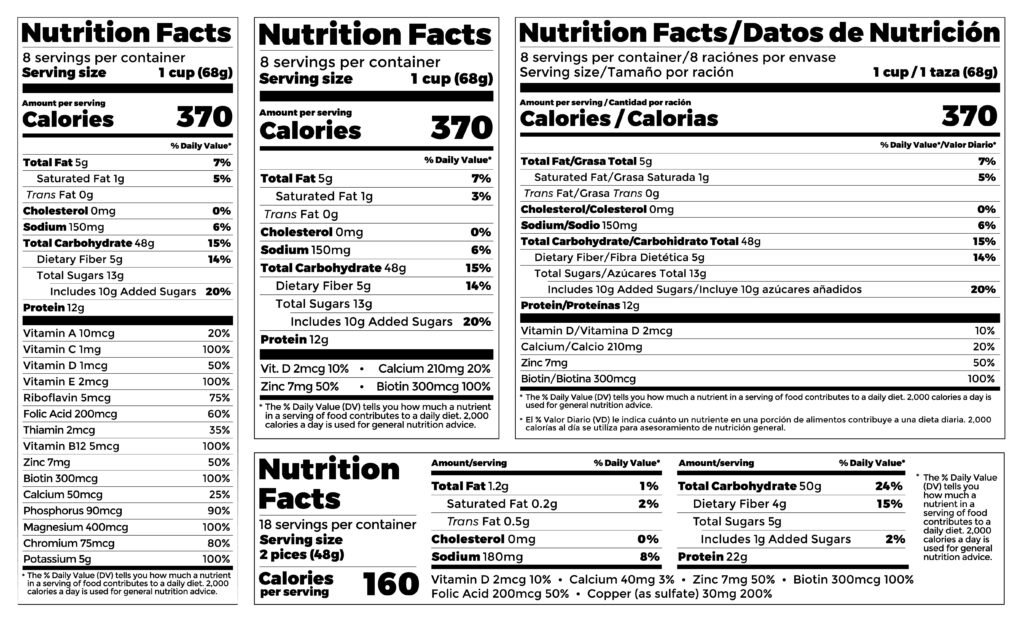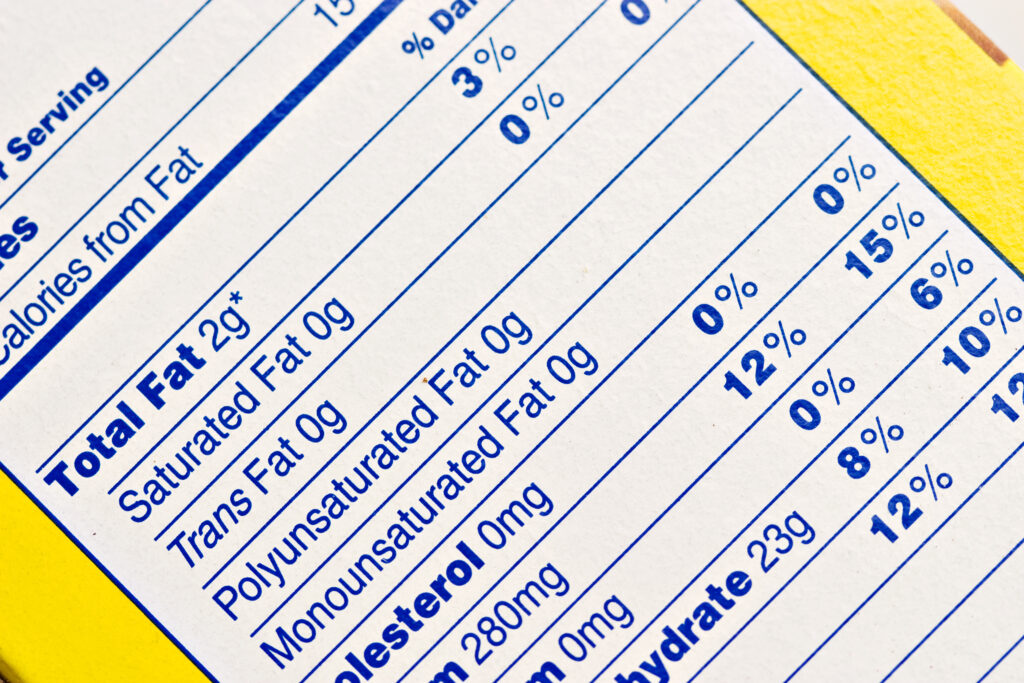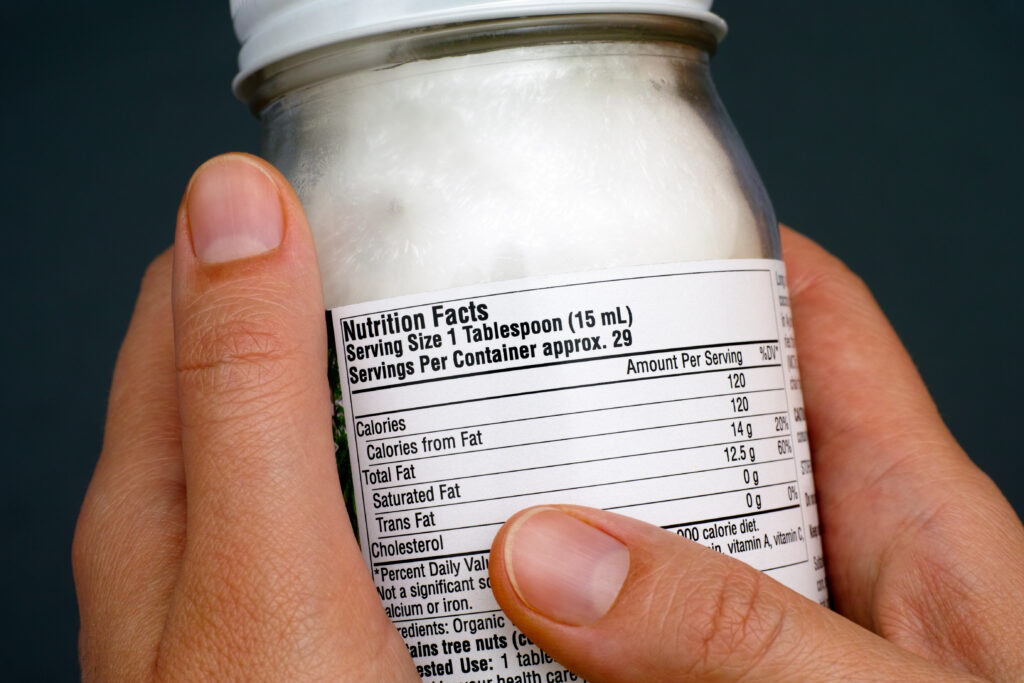 Bookmark
Bookmark Educating Patients on Nutrition Food Labels: A Comprehensive Guide for Healthier Choices
It comes as no surprise that scientists and healthcare practitioners alike recognize the impact nutrition has on individual and public health. Chronic, nutrition-related diseases have become a persistent issue that impacts many, with nearly one million Americans dying from diet-related diseases per year.
The prevalence of nutrition-related diseases highlights the importance of food labels, as their proper use has considerable potential to guide healthy food choices and encourage manufacturers to formulate more healthful products. Nevertheless, understanding the information on nutrition labels remains a challenge for most consumers, with 57% reporting a lack of food label comprehension.
History of Nutrition Food Labels
The Nutrition Facts label is overseen by the U.S. Food and Drug Administration (FDA) and was first mandated under the Nutrition Labeling and Education Act (NLEA) of 1990. The NLEA gave the FDA authority to require nutrition labeling on most food packages and determined the nutrients to be listed on the label.
To ensure that Nutrition Facts labels are successful in helping consumers make healthy choices, they must be revised and updated periodically to reflect advances in science and maintain ease of use. The most recent revision was released in 2016.
Key Components of Nutrition Food Labels
There are several important facets of nutrition labels that healthcare practitioners and nutrition enthusiasts alike should become familiar with. This includes obtaining a comprehensive understanding of serving sizes, calories, and daily values and how they impact everyday health.

Serving Size
Serving sizes reflect the amount of the product people typically consume and are standardized to make it easier to compare to serving sizes of other similar foods. The amount of nutrients quantified on the label are in reference to the serving size, not the entire package.
This is why it is important to be mindful of the number of servings present in the entire package, often listed as “Servings per Container”. For example, if you consume two servings of a product, you have to double the number of calories and nutrients listed, as well as the %DVs.
Calories
Calories provide a measure of energy (kcal) in one serving. This emphasizes the importance of knowing the serving sizes per container, as the number of servings you consume dictates the number of calories you eat. If one serving contained 200 calories, and you ate 3 servings, you consumed 600 calories total.
Daily Values
Daily Values are references that define how much of a nutrient to consume or not exceed daily. Daily Values were created to help consumers identify the amount of nutrients in one serving, in relation to their approximate daily requirement.
The % Daily Value (%DV) of a nutrient show how much, or what percentage, one serving contributes to the Daily Value of that nutrient. This in mind, the %DV can assist in determining if a serving of food is high or low in each nutrient.
If a nutrient is present at or below 5% of the DV in one serving, it is considered low in that nutrient. If a nutrient is present at or above 20% of the DV in one serving, it is considered high in that nutrient.
You will not find %DV calculated for all nutrients on the Nutrition Facts label, as total sugars and trans fats do not have a %DV. The %DV column also does not add up vertically to 100%, as these values are specific to each nutrient.
Next, you will find the “nutrients to get less of”. This includes saturated fat, sodium, and added sugars as they are generally overconsumed by the American population and may be associated with adverse health effects. For this reason, it is recommended to choose foods with a lower %DV for these nutrients.
There are several nutrients that Americans generally under consume including dietary fiber, vitamin D, calcium, iron, and potassium. Consuming more fiber can increase the frequency of bowel movements, lower blood sugar and cholesterol levels, and reduce overall caloric intake. Diets higher in vitamin D, calcium, iron, and potassium can reduce the risk of osteoporosis, anemia, and high blood pressure.
As evidenced; it is generally recommended to choose foods with a higher %DV for these nutrients.
Dual-Column Labels
For products that have between 2 and 3 servings but could be consumed in one sitting, the FDA requires the use of “dual column” labels to indicate the nutritional value on both a “per serving” and “per package” basis. The purpose of this dual-column label is to identify the number of calories and nutrients in the entire package. Products like ice cream that contain more than one serving in the package, but are often eaten in one sitting, may use this labelling.
Single-Ingredient Sugar labels
Another label variant is simple-ingredient sugar labels. Products like pure honey, maple syrup, or table sugar are not required to list Added Sugars as they are considered pure sources of sugar.
Since these products are often added to foods for sweetness, manufacturers are still encouraged to quantify the %DV for Added Sugars in the footnote of the label, denoted by a “†”. This allows consumers to easily identify how one serving of these products contributes to the Daily Value for added sugars and to their total diet, if used as a sweetener.
For example, if one serving of honey contains 17g of sugar, the label may read “One serving adds 17g of sugar to your diet and represents 34% of the Daily Value for Added Sugars”.
Practical Tips for Understanding Food Nutrition Labels for Patients
%DVs can be handy when it comes to comparing products to make healthier choices. Patients can compare the %DVs of various products to choose those that are higher in nutrients they want to consume more of, and lower in nutrients they want less of. It’s essential to keep in mind that the %DVs are based on the serving size of the product, so make sure to choose and compare foods with the same serving size.
Product packaging often contains claims like “natural,” “organic,” or “low-fat”, which may cause confusion. Let’s break down some common label claims.
Low-fat
A product labeled as “low fat” must contain 3 or less grams of fat per 100g or no more than 30% of calories from fat. While some might assume that the product is naturally lower in calories or a healthier alternative, low fat products often contain added sugars to enhance flavor.

Natural
The FDA considers the term “natural” to imply that nothing artificial or synthetic has been added to a food. It does not, however, consider food production or processing methods, like the use of pesticides.
This means that the term “natural” can be added to a chicken product even if the chickens were fed grain produced using pesticides. This contradicts the general public’s interpretation of the word “natural”, as studies show that many consumers believe “natural” also applies to production and processing methods.
Organic
Unlike other components of nutrition facts labels, the term “organic” is not regulated by the FDA; rather, it is regulated by the USDA. Products using the USDA Organic seal must meet the standards set by the OFPA Act of 1990.
This includes the use of natural fertilizers and eco-friendly pest control methods to protect soil and water, and the humane treatment of livestock who must be allowed to roam freely outdoors, be treated humanely, and consume feed free of growth hormones and antibiotics.
Packaged goods cannot contain GMOs, artificial colors, flavors, or preservatives.
Why Nutrition Labels Matter
Nutrition facts labels provide valuable information that can influence our food choices and ultimately, our health. As chronic, nutrition-related diseases rise, individuals are growing more aware and are inclined to tailor their dietary habits to fit their needs.
Patients should take the additional time to read the nutrition labels when visiting grocery stores to understand what they mean for health and how they might impact the human body. Additionally, healthcare practitioners can serve as a valuable resource for additional guidance and education.

Did you know Wholistic Matters is powered by Standard Process? Learn more about Standard Process’ whole food-based nutrition philosophy and where to buy.











